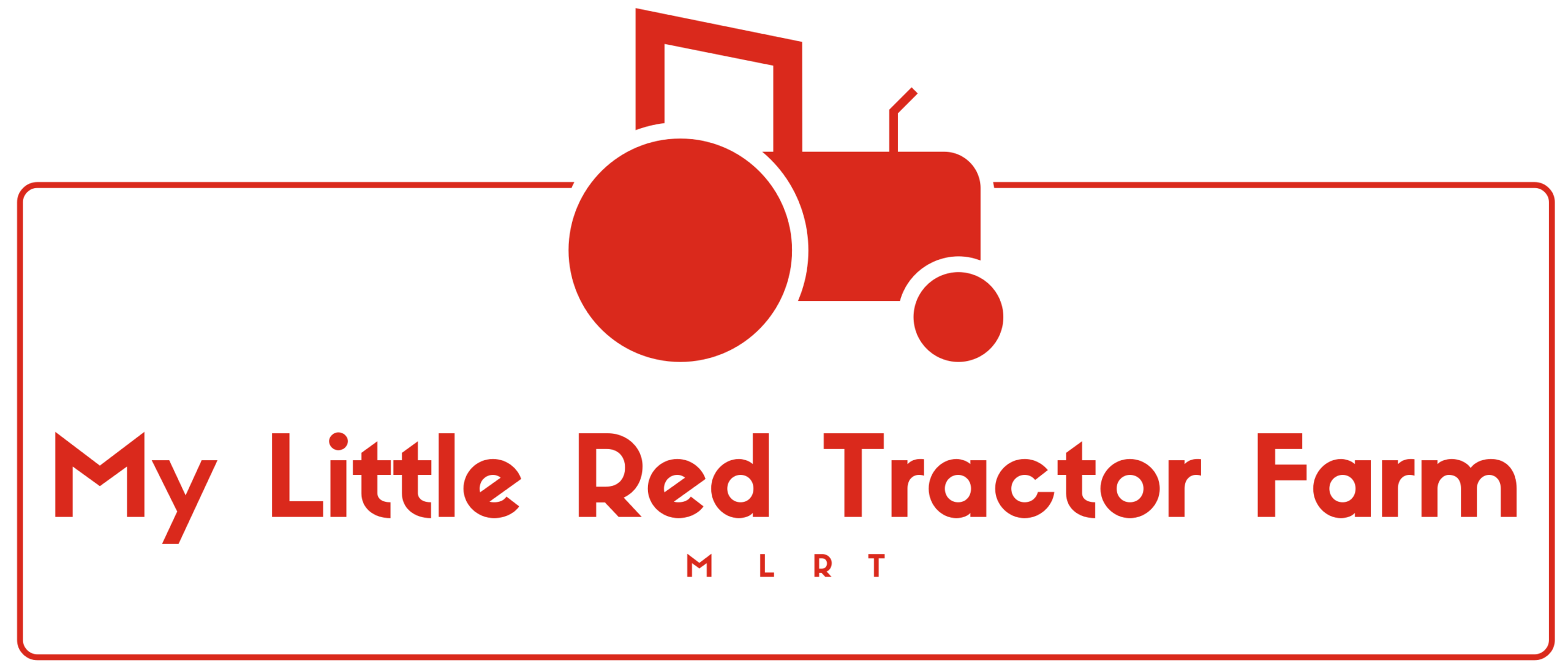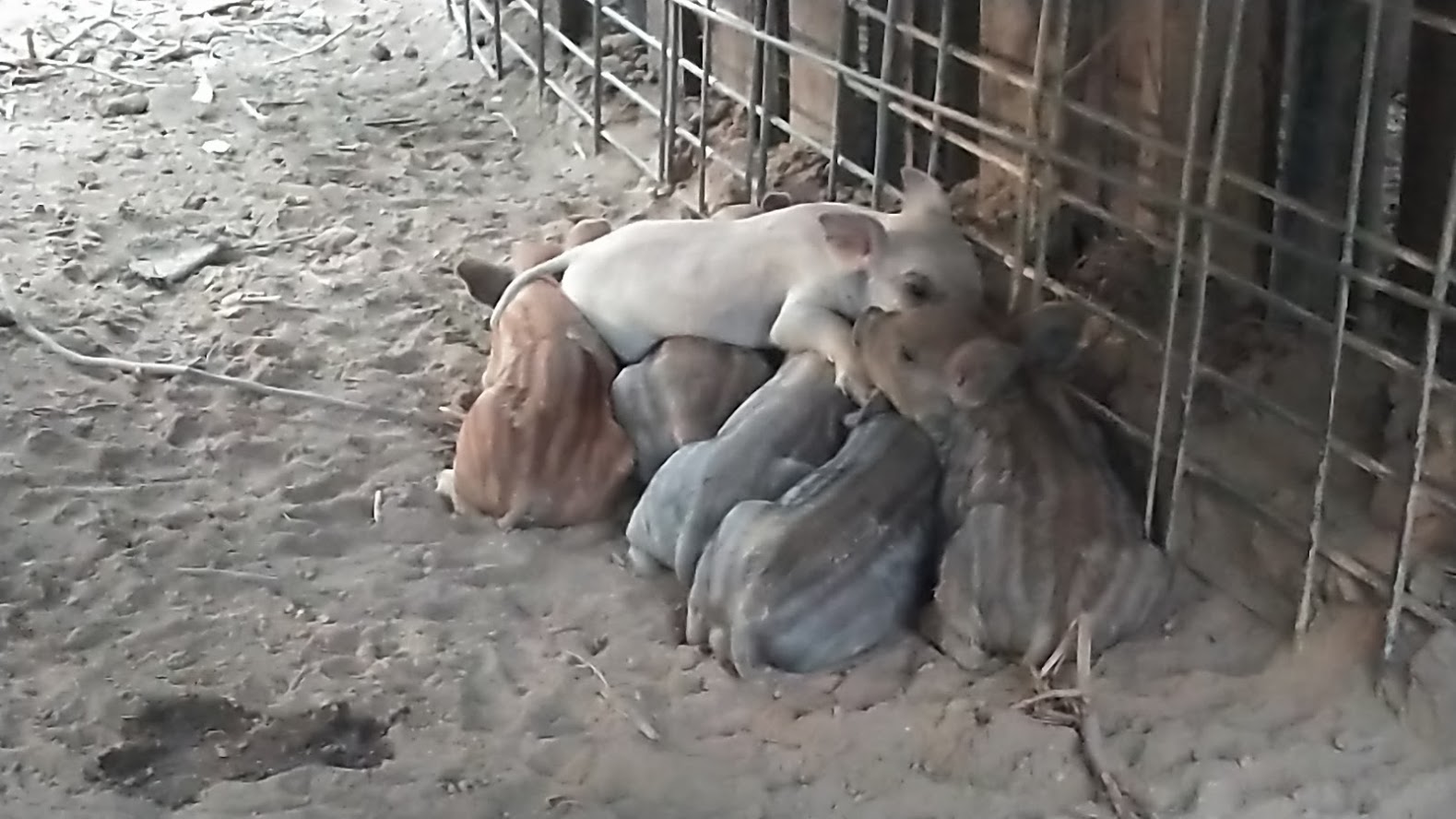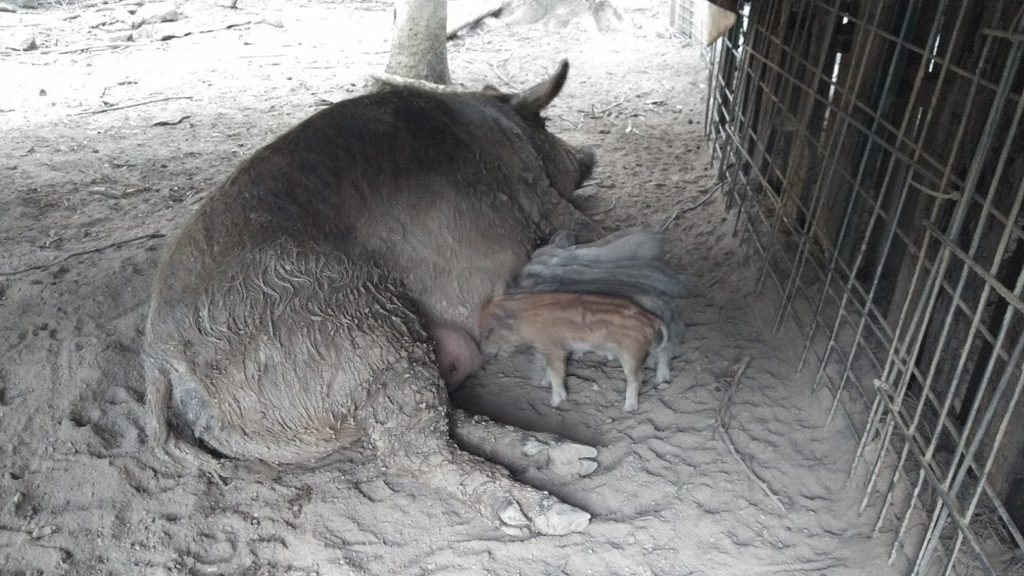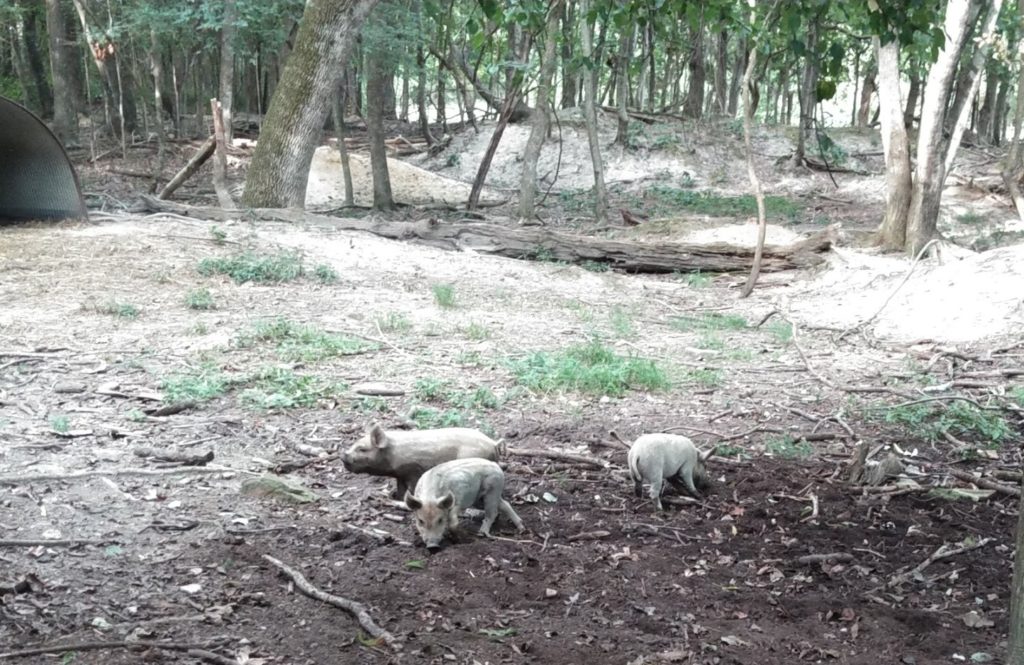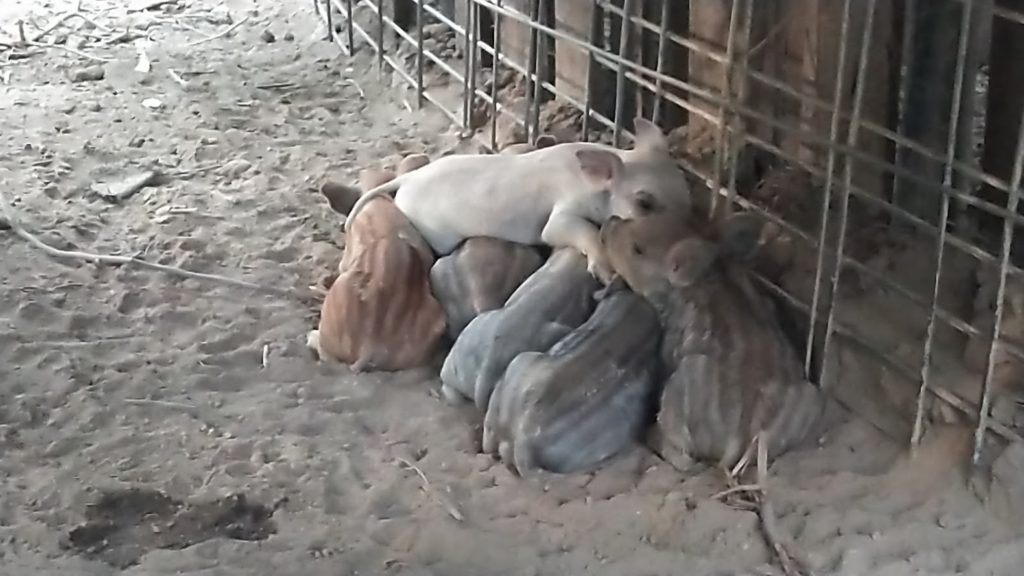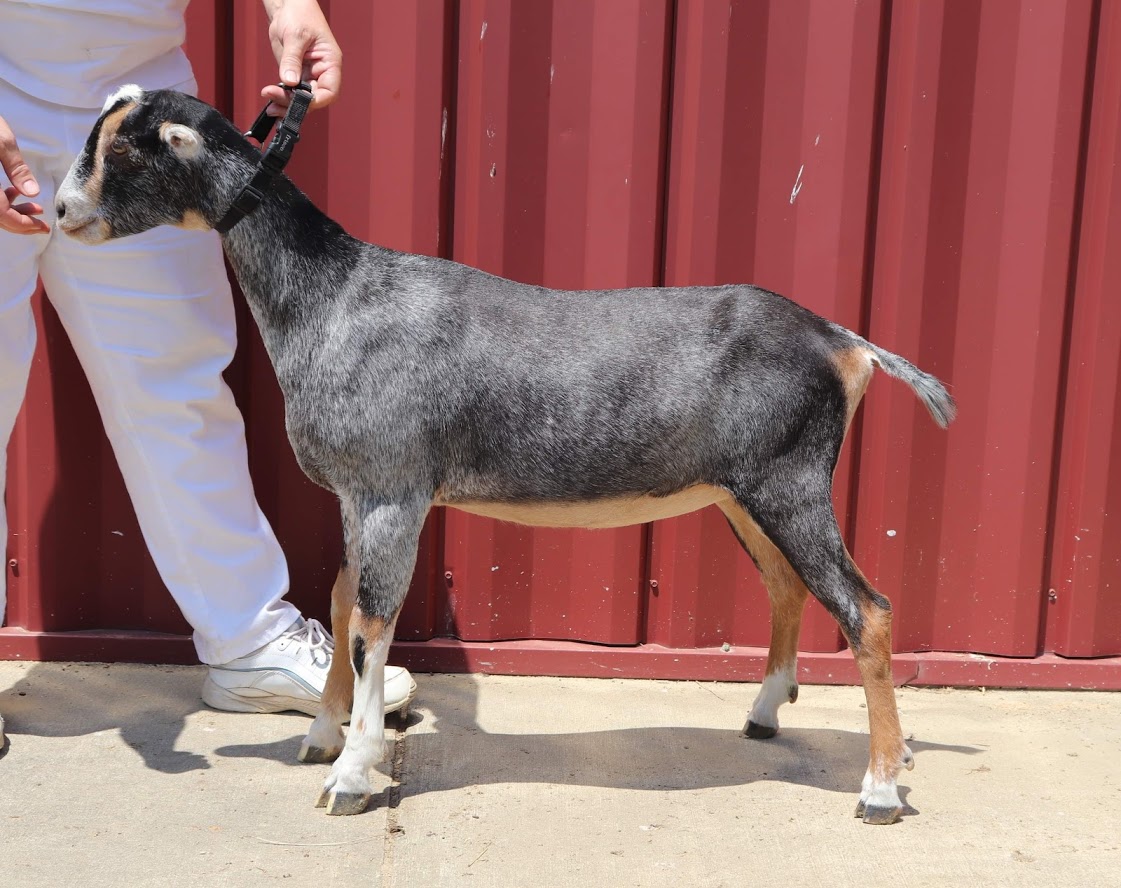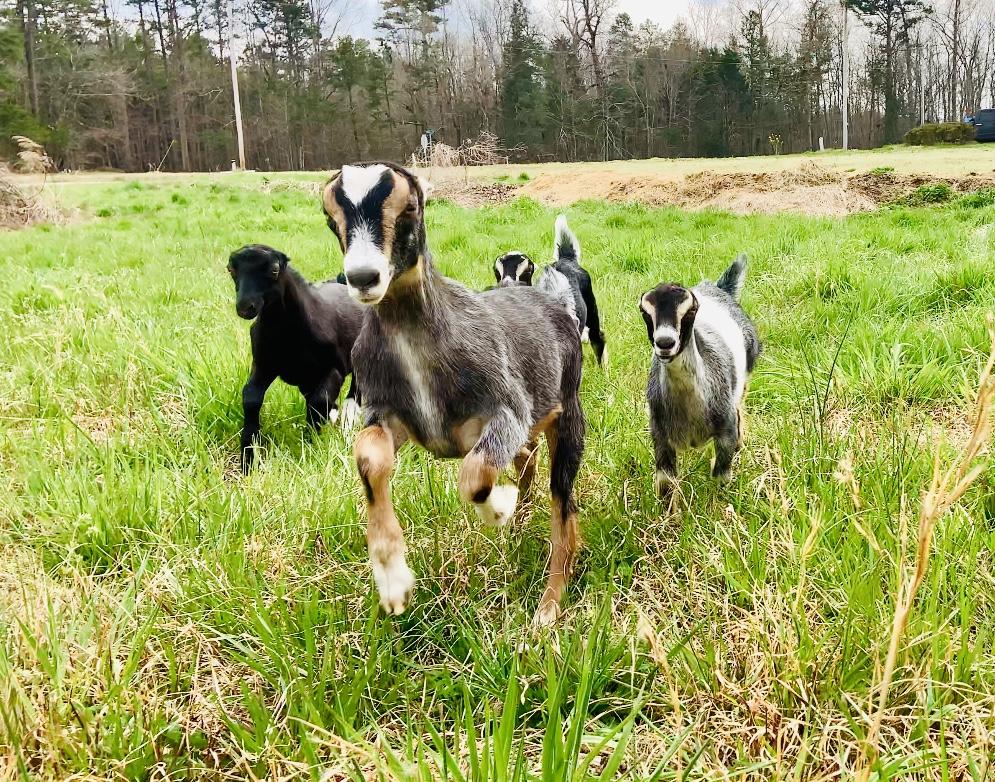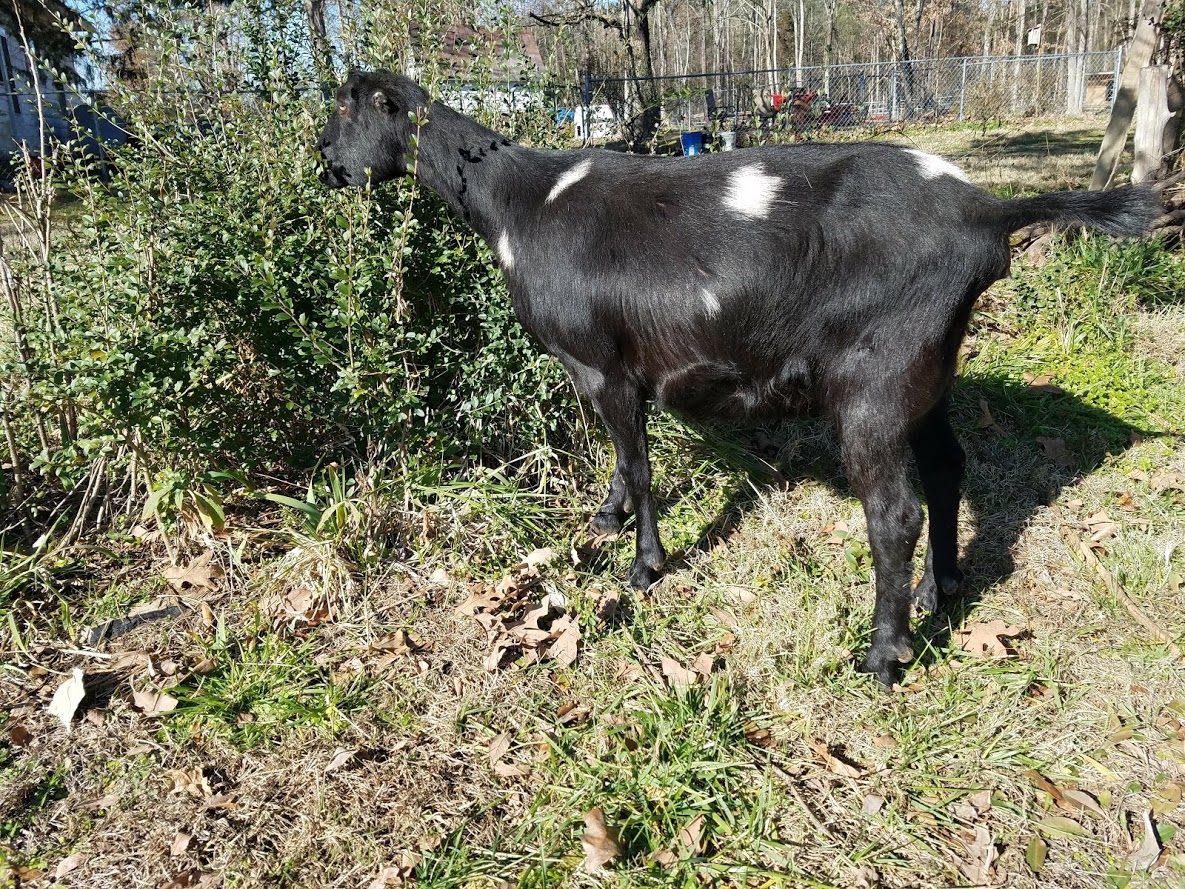Seven adorable piglets were born on Saturday, July 13th. One was lost the first day but the other six are doing great. They started following their mother around on the 2nd day. (2 boars, 4 gilts)
New Genes!
We rarely purchase outside does but this little girl was available and we are thrilled to add her genetics to our herd. Thank you Wingn’ It Farms for entrusting her to us!!
We also have deposits on TWO bucklings from two other herds for next spring!! We will post more on those when the time comes. Fun! Fun!!
Wings & Caprine “Hetty” has very strong dairy character and an excellent pedigree! We are hoping she matures well enough this summer/fall to freshen as a yearling next spring. She will need to meet our 85-90 lb minimum prior to our breeding cut-off date of November 30th or be a dry-yearling next year. (This dead-line helps us to keep on track and prevents us from having does to freshen after April.) She was 41 lbs when we took ownership of her on June 1st and she should gain fast and steady over the next 4-5 months.
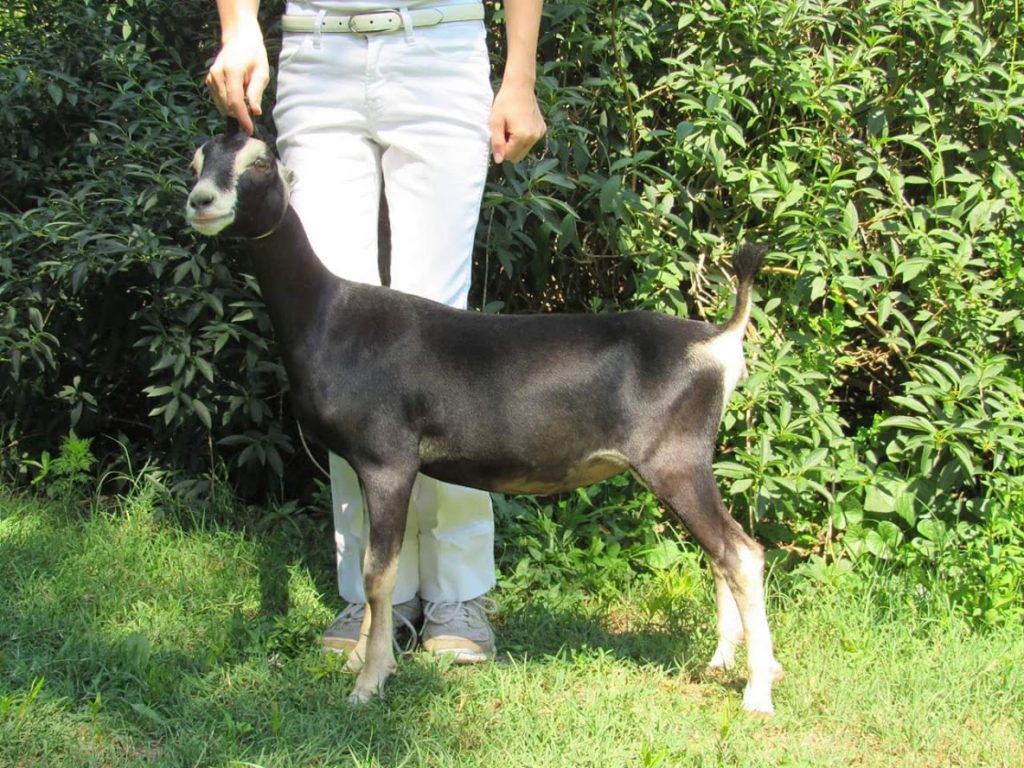
(photo courtesy of Wings & Caprines)
Spring shows 2019!
We took our herd of goats (milkers, doelings & bucks) to two spring shows this year. We attended the Legendary Goat Breeder’s Assoc show the weekend of May 3-5th in Winston-Salem, NC, and also the Piedmont Dairy Goat Breeder’s Assoc show in Rocky Mt., NC the weekend of May 24-26th. MLRT Caesar won his final Championship leg as a 2 year old and has now earned his CH title as a permanent Champion! Our first home-bred to win that title! We are thrilled!
Our girls placed good considering the amazing competition but did not win any championships. It is a LOT of work (and money spent) and we are rethinking showing. The weather was unseasonably hot (mid 90’s) and very humid plus we had trailer tire issues and pen issues. It just wasn’t as fun this year for us. Also, they picked up some sort of viral diarrhea that has made several intermittently sick with a fever and very loose stools. We definitely will not attend any fall fair shows this year and maybe by next spring we may feel like attending the spring shows… we’ll see….
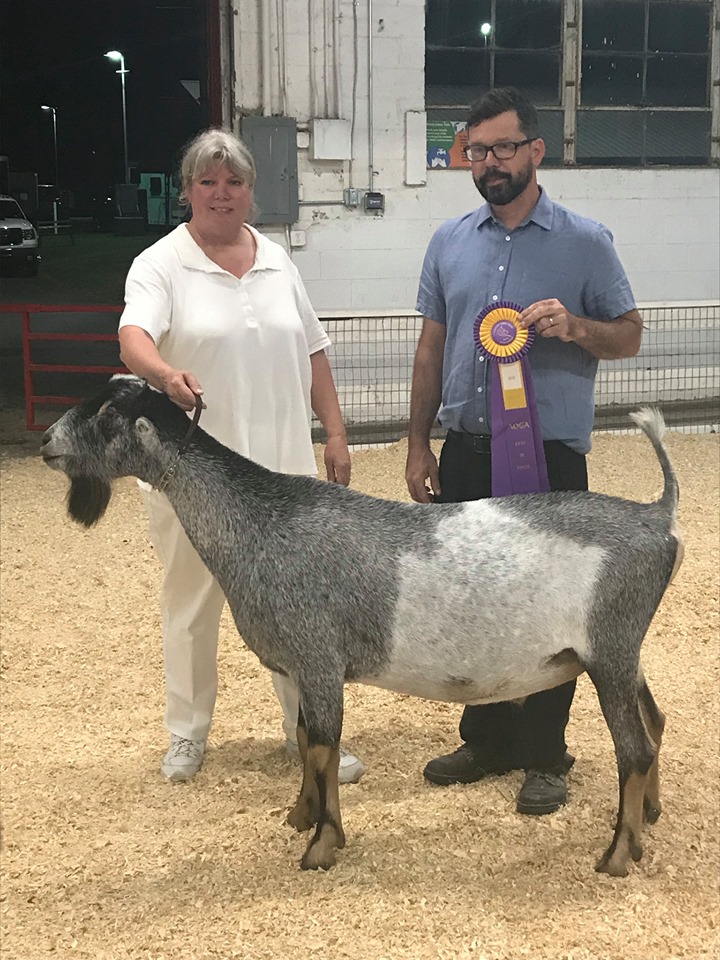
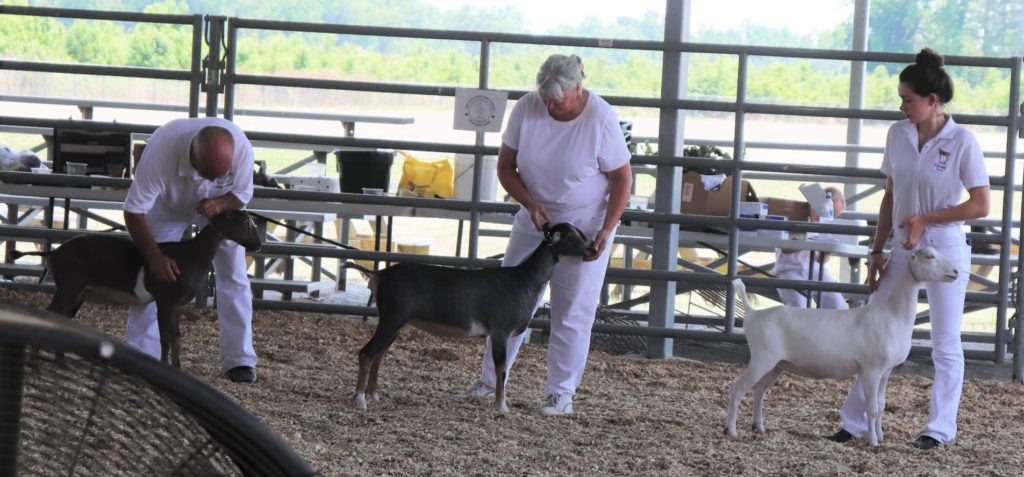
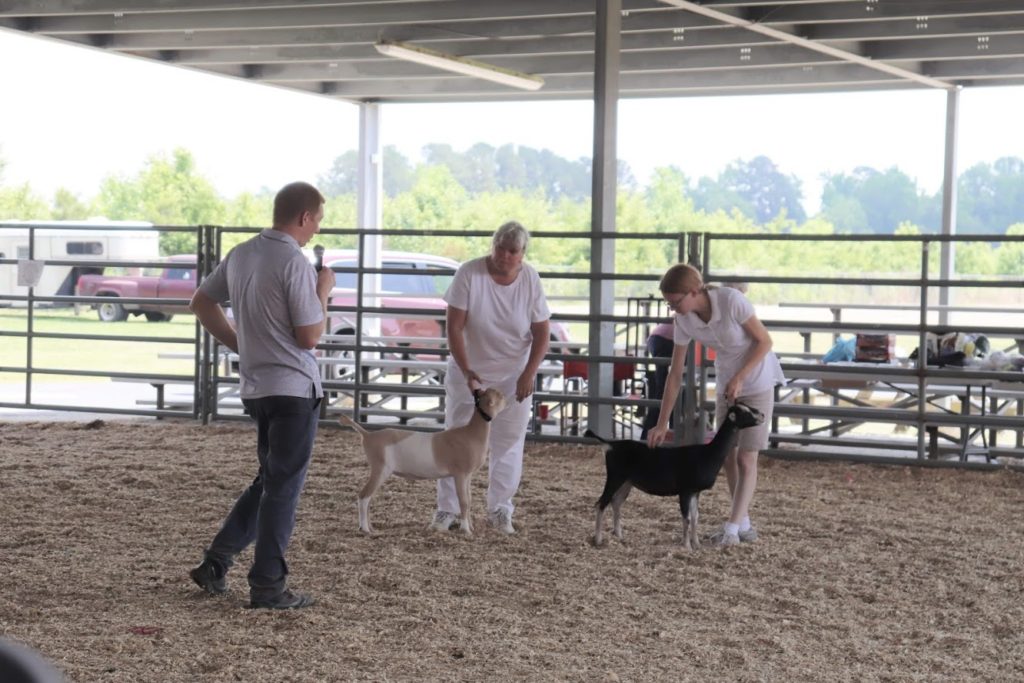
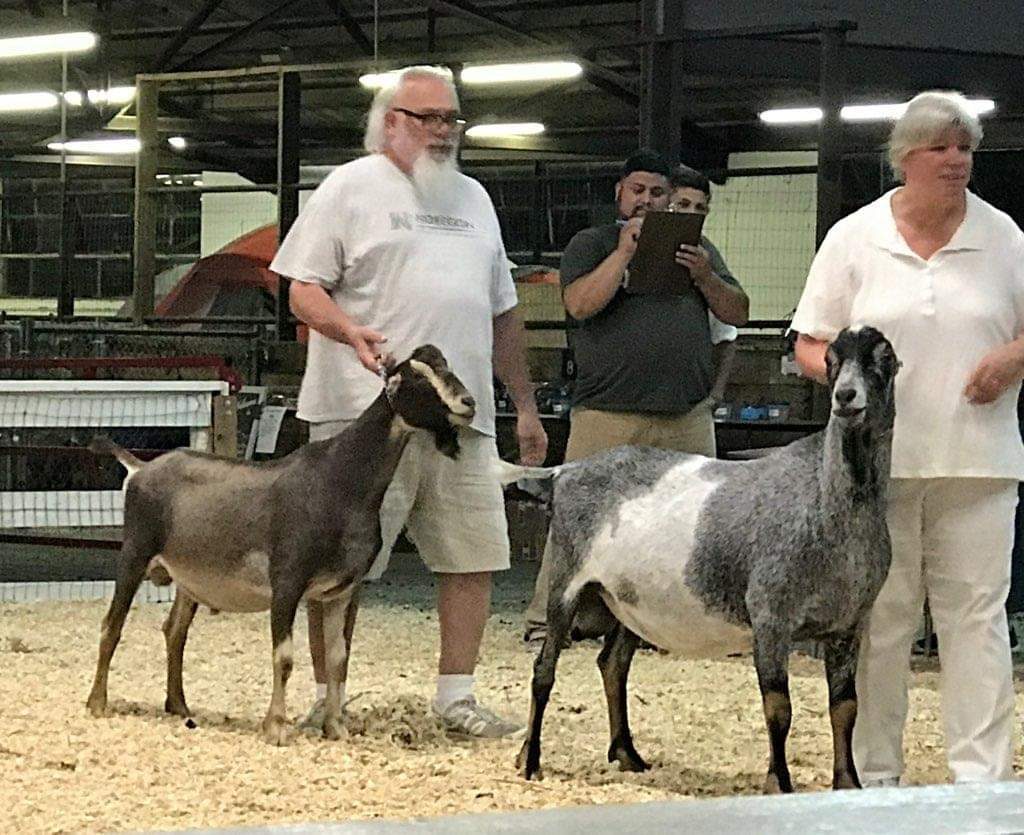
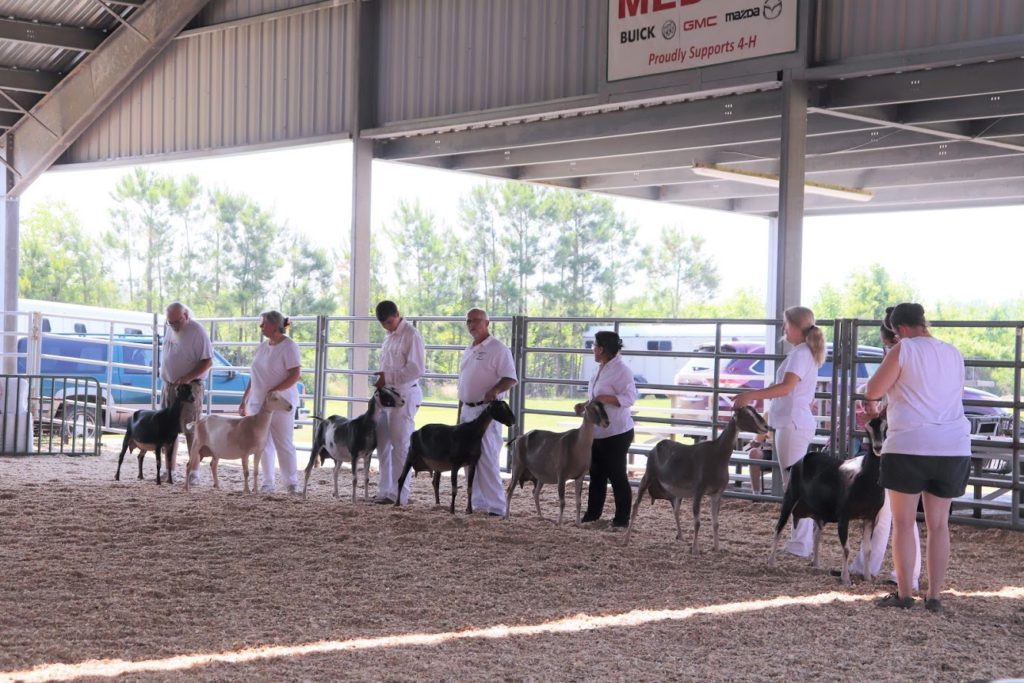


2019 Kidding Season
Each year our kid crop gets better and better. We love the length of body/bone, levelness of top-line and width this year’s kids are showing! We are also excited about our two first fresheners and their gorgeous udders!! We will have some very, VERY difficult decisions to make this summer/fall to keep our number of does to only SIX. I really wish I had a larger barn with more room!
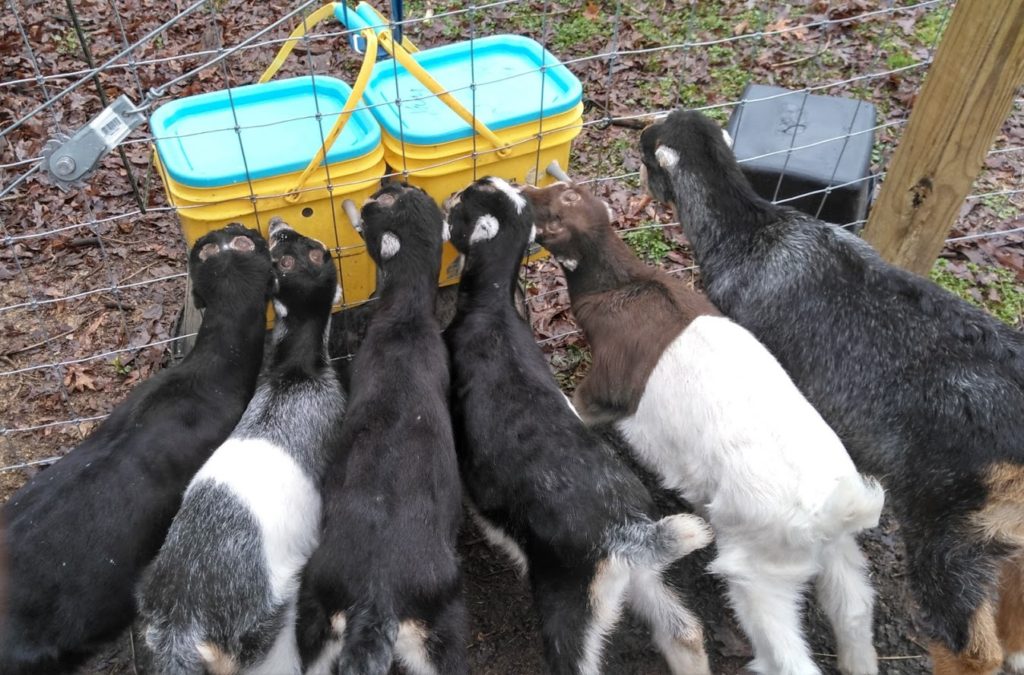

MLRT Victoria
February 1, 2019 — AI breeding, Forrest Pride Royal Flush x MLRT Victoria – gave us a beautiful doeling (MLRT Tzuriel) after being induced.
Kidding season is always such precarious and exciting time. So hopeful yet so un-nerving. Even the best kidding season will test our faith in God. This year was by far the worst for us. We lost our beloved MLRT Victoria due to kidding complications. The vet saved a doeling but Victoria could not recover from the invasive procedure. We have named the doe, Tzuriel. She is a very special kid to us. Victoria passed away 2 days after the very traumatic birthing . The internal damage was too great for her to overcome. Victoria was a very, very special doe and she is so deeply missed. Thank you God for giving us a doeling from her.

Tempo Kim
February 3, 2019 — Tempo Kim is open 🙁 We induced her to kid on February 2nd but she only cycled in estrus. She must have lost her kid sometime after the 30 day bioPyrn blood test. She only passed some bloody discharge after being induced and just to be sure, we had our vet come out. She examined her and did an US but did not see any kid. I can only speculate that it was the dewormer I drenched her with a few months ago. Her worm count was so high! 🙁 Lesson learned.
I am trying to bring her into milk and she is up to 5 cups (once a day milking) 25 days later. I will dry her off once we sell some kids.
I considered retiring her but will just let her rest this year and try AI’ing again this fall.

MLRT Ashara
February 5, 2019 — MLRT Hiro x MLRT Ashara – gave us buck & doe twins (at 144 days – natural birth). Both very correct with lots of potential. The dark chocolate sundgau buckling has been sold and the black doeling retained. We have named the doeling “MLRT Cali Belle” 🙂

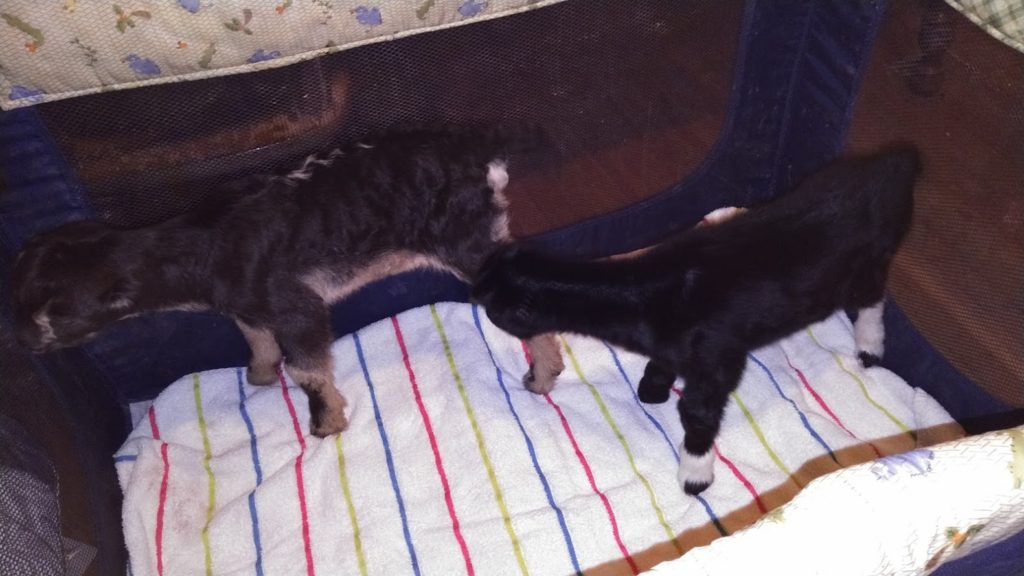
MLRT Tylfybom
February 10, 2019 – MLRT Hiro x MLRT Tylfybom – Tylfybom freshened with two beautiful bucklings!


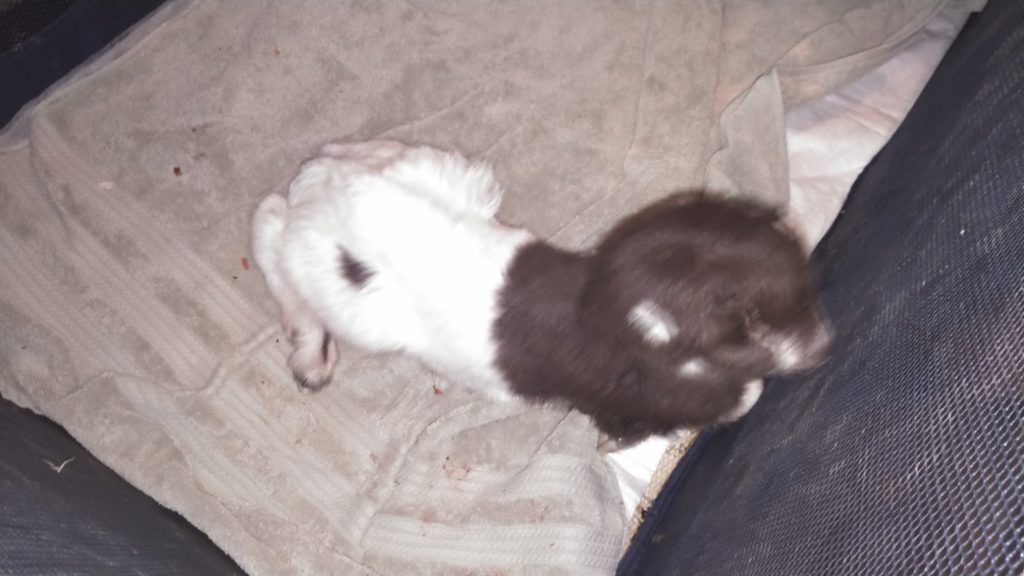
Lucky Star’s LB Faythe
MLRT Caesar x Lucky Star’s LB Faythe – Faythe is due around February 20-24 (144-148 days). She is HUGE and I am expected triplets from her!
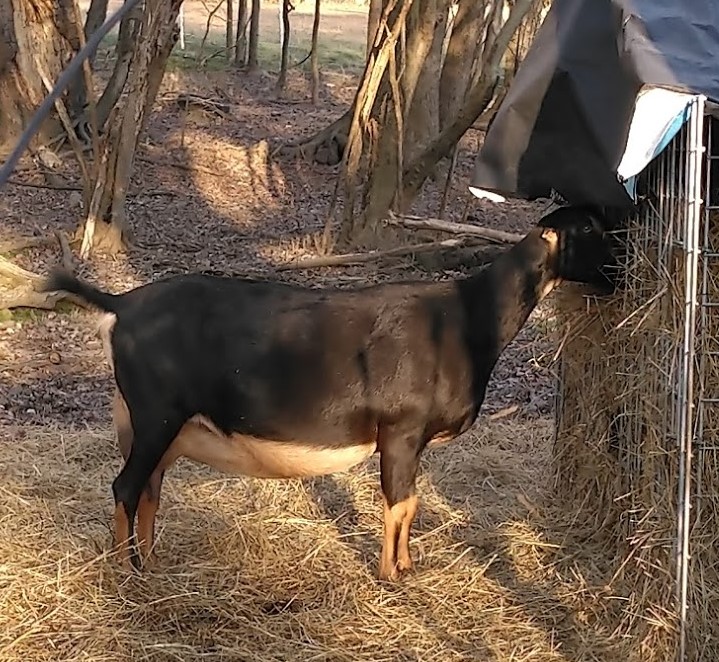
Faythe freshened on February 20th (144 days – natural birth) with triplets! Easy birthing for all three. They are gorgeous tall, long and level kids. We will retain both doelings but the buckling is available at this time. The black/tan doeling with white is named “Cameo” and the grey doeling is named “Journey”.


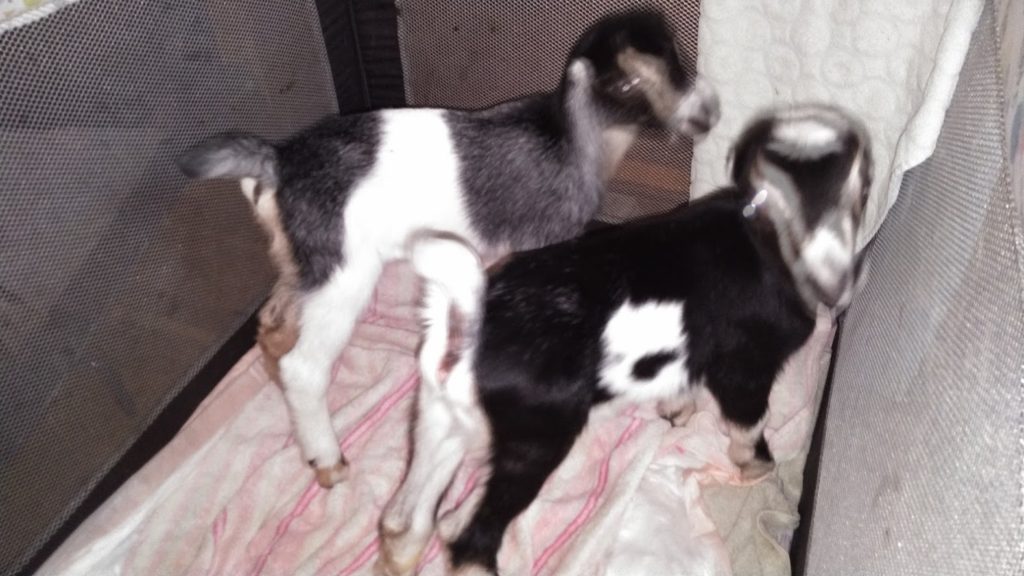
MLRT Vanilla Latte
MLRT Hiro x MLRT Vanilla Latte – Vanilla Latte Birthed on day 149 with twin doelings! 1st was a large 8.2 and had to be pulled, 2nd was only 5.1 and ‘slipped’ right out.

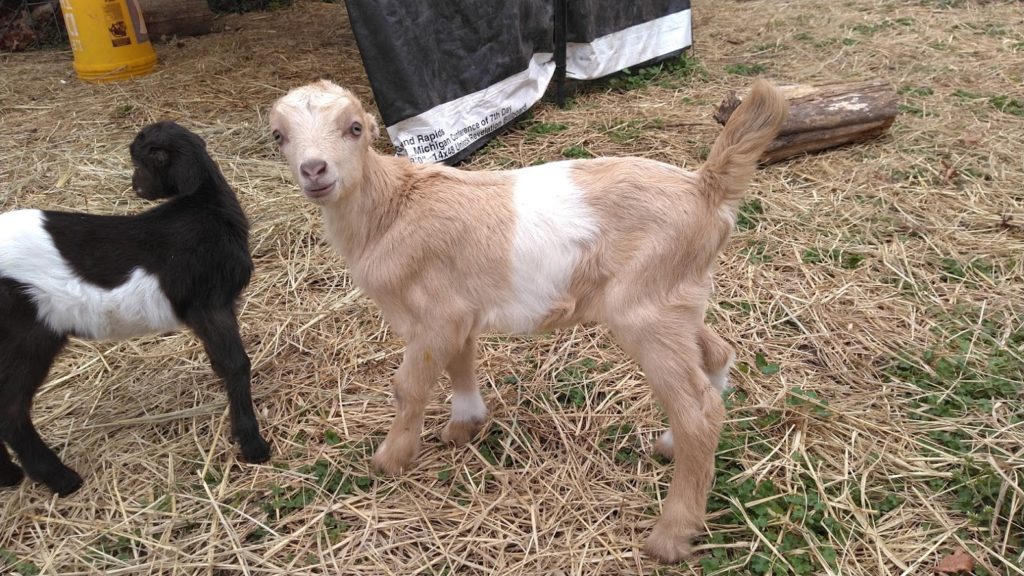
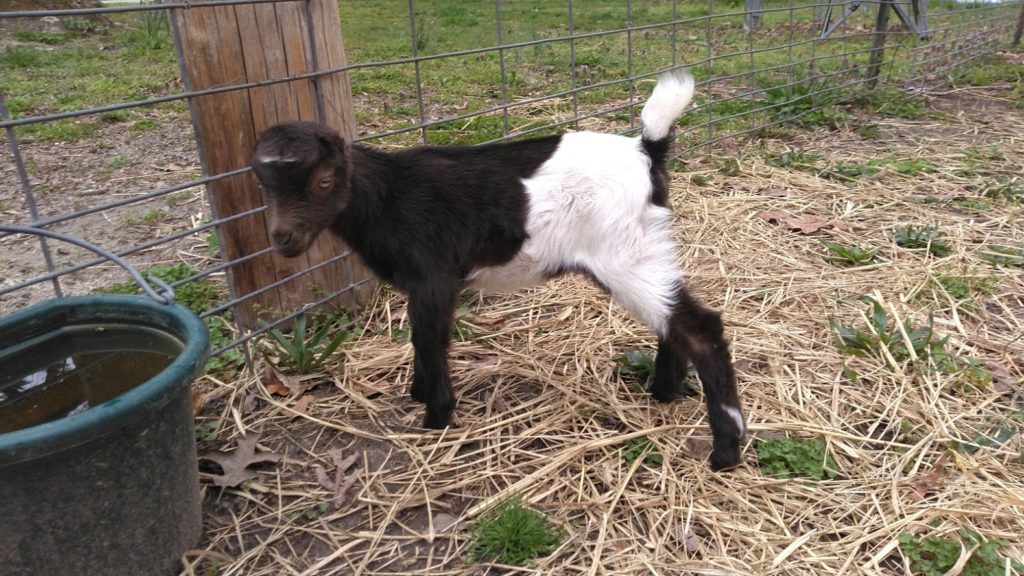
Pregnancy Toxemia/Ketosis! What to do?
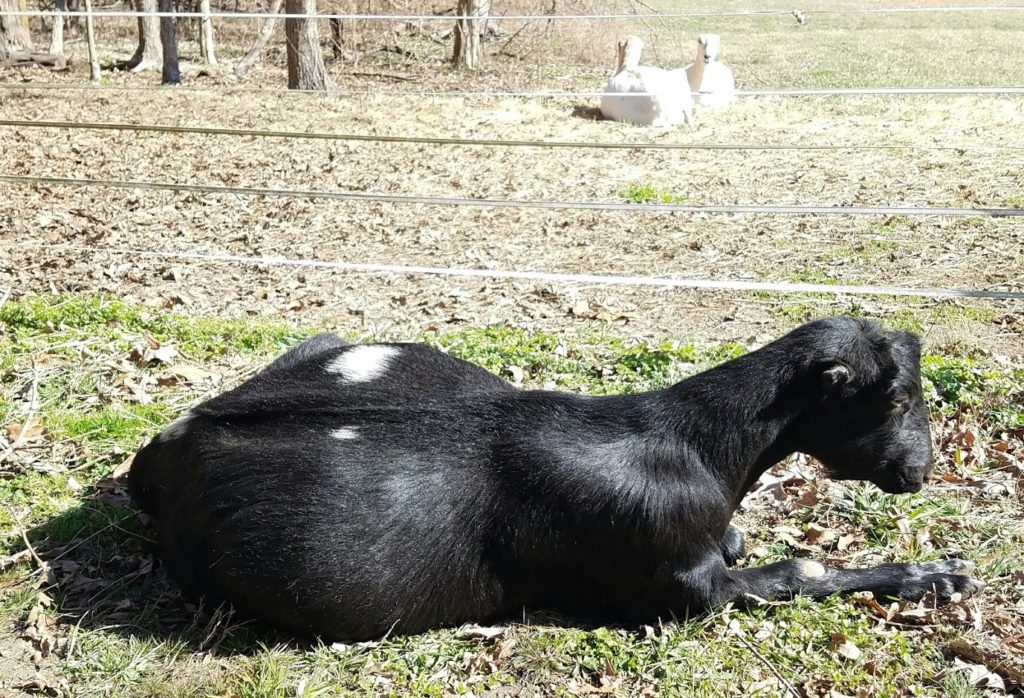
The article below will prove extremely helpful to anyone with a weak pregnant goat. We have had ketosis on our farm several times and have nursed each one through to successful birthing. Jennifer has some great tips that I wished I had known when we first started raising dairy goats!
Pregnancy Ketosis (Credit to the Author Jennifer Herald Smith-Stanton) Thank you for sharing.
Do you worry every year about heavy pregnant does who are “down” or “shaky” or “just lying around” listless? This worry comes up yearly at this time, especially with new goat owners. If you are new to goats, you may not be aware of Pregnancy Ketosis, but this is a VERY serious disorder that needs veterinary intervention immediately!
More does are probably lost to ketosis than any other disorder or disease. Experienced goat-herders can sometimes handle this problem on their own, but even those of us who have been breeders for many years feel that veterinary attention is necessary when ketosis becomes an acute problem in a doe.
If your doe is due within the next month and starts acting sluggish or just “off”, please consider this disorder immediately and take action. What do you do? Exercise is the cheapest and most easily accomplished way to keep ketosis at bay. Even if you live where it’s cold, take your goats on a walk daily, or make sure they get out of the barn and get some exercise. If your doe is not getting adequate nutrition at this time, she should be! Make sure you are feeding enough TDN (total digestible nutrients) to meet her and her kid’s needs. Don’t overfeed, but feed high quality hay and grains during this period, especially in the North where pasture is at a minimum by this time of year. This may need to be accomplished by several small feedings a day rather than one or two. With large kids or multiple kids, the rumen area is so crowded that some does just can’t eat enough in one or 2 large meals a day. During these last 30 days, it is perfectly okay to increase the protein content of the feed, but also keep the carbohydrates high as well. I personally feel that a lower protein grain that is higher in energy is better until they actually kid.
The whole process of ketosis is that the does’ rumen is being crowded by the kids in her uterus. She may not be getting around as well due to the increased weight of the kids. She doesn’t eat as much and her rumen can’t hold as much as in the non pregnant stage. So she compensates by drawing on body stores of fat for energy. The fat in an animal is not only “just fat” but is also a way that the animal can get rid of toxins, etc in their system. Those toxins are stored in the body fat. When there is a rapid utilization of the fat stores these toxins are circulated back into the blood stream and they can put her into ketosis. If you have had any cases of poisoning or bad feed during the year, be very watchful for a sluggish doe. If she goes into ketosis, the toxins can easily overcome her system and will kill her!
Energy is very important at this stage for the doe. If you have access to ketone sticks or paper you can check her ketone levels through her urine, but most vets will use the symptoms described above to identify ketosis and will treat accordingly. You can buy ketone sticks (papers) at any pharmacy as they are the same thing that diabetics use. Wet them with urine from several does to get the “normal” values. Then you know when the color changes are different you have problems. Also, a ketotic doe will have breath (sometimes, not always) that smells different.
A doe in severe distress usually can be pulled out of this type situation through use of an IV from the vet, if caught immediately. If she has been down for more than 10 hours, the chances of survival start decreasing dramatically. Our vet prepares an IV with several vitamins and glucose with a bit of calcium (ketosis can cause even a pregnant doe to start into milk fever as well). He gives this IV slowly to a downer (a doe who can’t get up at all and is shaky). Ninety percent of the time, she is up and moving around (before the IV is done) if she is caught early enough. Again, I must emphasize exercise. We used to allow the does to lie around in the barn and got some real problems yearly with ketosis. Now we make them get out and exercise daily. We don’t get a case of ketosis unless the weather is bad for many days and they are stuck in the barn. Even overweight does (prime candidates for ketosis) can get through that last stage of pregnancy fine if they get out and move around every day and are fed small meals high in carbohydrates.
Electrolytes work very well for a shocky doe that is not down yet. Buy a bucket of calf electrolytes (non medicated) from a vet supply like Jeffers and have them on hand. Jeffers and other suppliers also have a product called Ketogel. This is good, but use very cautiously and sparingly! It is propylene glycol and can virtually burn their rumen’s, so we don’t use it often, and if we do use it, we use no more than 3-4 tablespoonfuls once or twice a day. Check every doe in your barn every day to make sure she is up and “perky”. When you walk into your barn, take 30 seconds to stand in the barn door and observe your does. A doe that is heavy pregnant and holding her ears down will usually be a prime candidate for going into ketosis. A happy, alert doe (other than goats with lop ears will hold her ears up and forward usually. Make sure they are doing it. A doe that doesn’t feel well will also not have that “bright eye” that we associate with good health. Look for signs of listlessness! Just those 30 seconds of observance done every day of the year will help tremendously in all signs of illness in all goats. Learn to always be observing the animals. You will soon know when something is just “not right” and have time to react before things get too far along! So watch those does daily and know what normal looks like so you will know what to look for and how to react to ketosis. This will literally save your does life!
Last Updated: 03/11/2000 10:52 AM
Copyright, 1998
Rodney & Jennifer Smith
